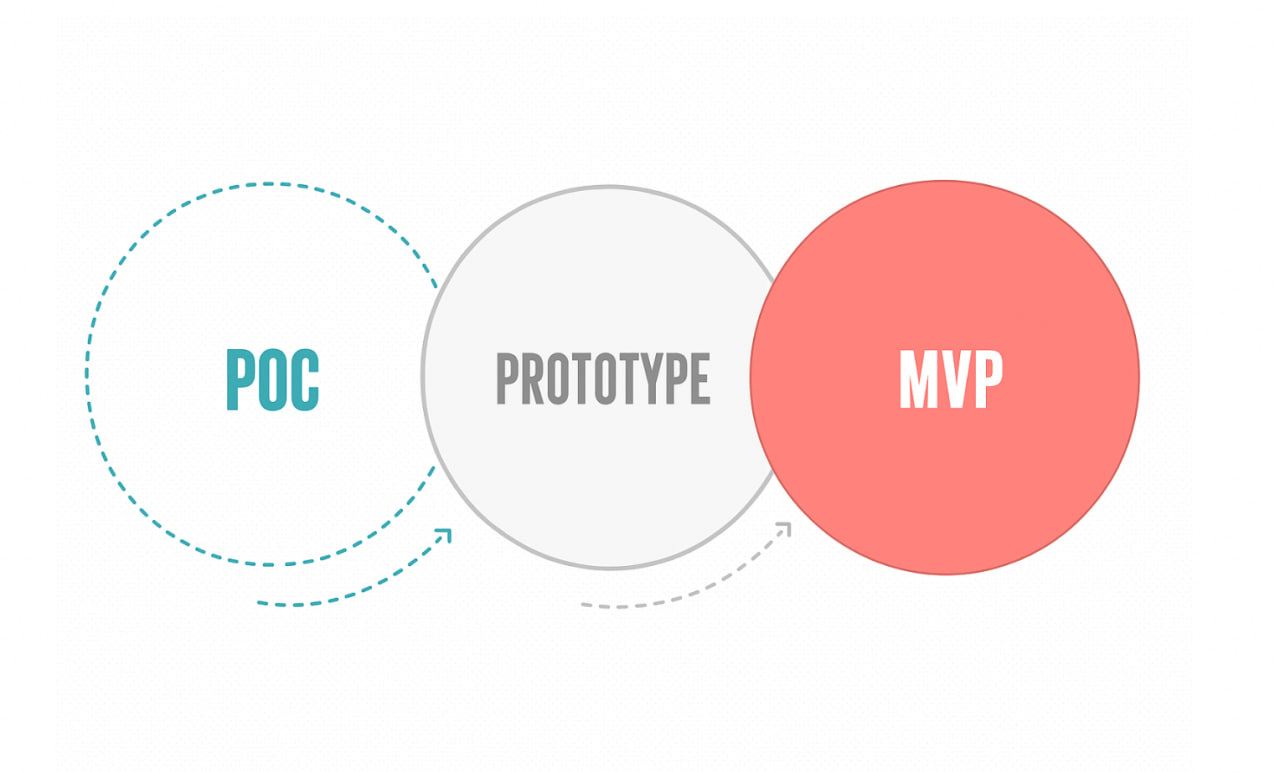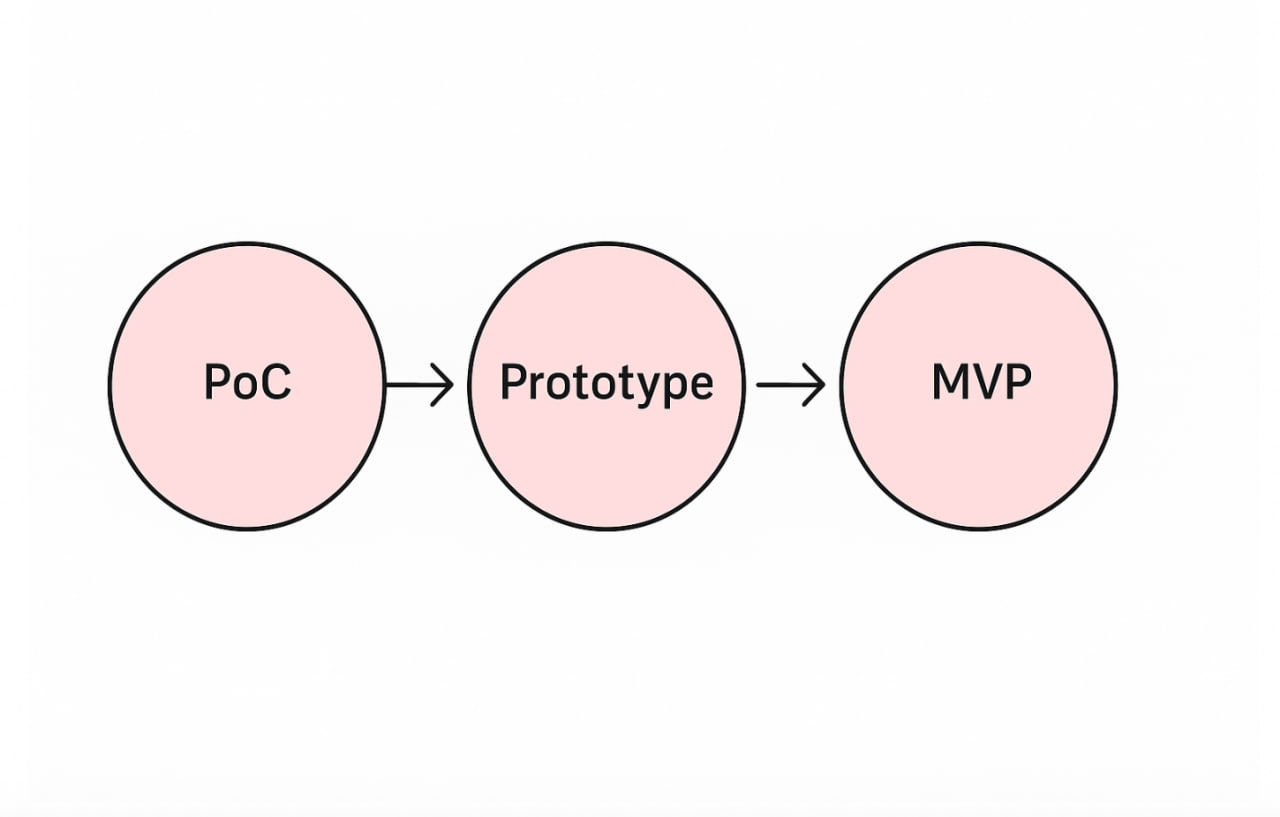A Proof of Concept (PoC) is a small project that shows if an idea can work in real life. It helps teams check if their product or solution is possible to build. This is done before spending money on full development. PoC is not about making the final product. It is about testing one key idea. If it works, the team knows they are on the right path. If it fails, they can change direction early.
So, what does PoC stand for in business? It means a test run to see if an idea is possible. When people ask, “What does PoC stand for in business?” they are talking about checking the technical or practical side of an idea before going big.

Proof of Concept Advantages
Before building something big, it makes sense to test if the idea even works. Proof of Concept’s a simple way to check if your idea can be built, used, or trusted. If you're wondering about the proof of concept definition, think of it as a small experiment. You take the core of your idea and build just enough to see if it works. It’s very useful in many fields, especially in AI product development, where ideas can get technical and risky fast.
So, what does PoC stand for in technology? It means testing a single feature or function to see if it's possible. What are the benefits of using a PoC:
- Saves time and money. You don’t have to build the full product to see if it works. A PoC keeps things small, helping you avoid wasting resources.
- Finds problems early. It’s better to spot a mistake early than after months of work. A PoC helps you find technical or design issues right away.
- Builds trust with investors. People like proof. When you show something real that works, investors and partners are more likely to believe in your idea.
- Helps you focus. By working on only the key part of your idea, you avoid distractions. It helps your team stay clear on what really matters.
- Improves the pitch. With something real to show, your presentation or sales pitch gets better. People trust what they can see.
In short, a Proof of Concept is a smart step when starting a project. It gives you clarity, saves effort, and keeps your plan real. If you’re thinking about building something new, big or small, this first step might save you a lot down the road.

What Does Prototype Mean
Before making a final product, many teams build a prototype. It’s like a first version, not perfect, but close enough to show how the real thing might work. You can click, scroll, or interact with it. It may not have all the features, but it gives a clear idea of how the user will use the product. This helps everyone see what works and what doesn’t.
A prototype is best described as an early sample or model. It can be rough or polished, depending on the goal. Some are made with simple paper sketches. Others are digital and look almost real. The goal is not to finish the product but to test its shape, features, and user flow.
A concept prototype is usually the first type. It shows the main idea. Maybe just a few screens or steps. It’s helpful when the team wants quick feedback. It gives people something real to look at, even before any code is written.
Advantages of a Prototype:
- Fast feedback. With a prototype, you don’t have to guess what users think. You show them something real, and they tell you right away. This saves time and helps avoid big mistakes.
- Easy changes. It’s much easier to change something in a prototype than in a full product. If a button is in the wrong spot or a screen feels confusing, you can fix it quickly.
- Clear vision. Everyone sees the same thing. The team, investors, or clients can look at the prototype and understand the idea better. There’s less confusion and fewer surprises later.
- Better planning. By seeing what’s hard or easy to build, you can plan better. You know where to focus time and effort.
- Cheaper than full product. You don’t have to build everything. A prototype gives enough to test and learn without spending too much.
- Shows how it works. You can test user paths, clicks, and screens. This gives real insight into what feels good or bad for the user.
- Helps design. Designers can play with ideas before setting anything in stone. It gives space to try, fail, and try again.
In general, a prototype helps turn ideas into something real you can see and touch. It’s not perfect, but it’s good enough to test. A prototype is best described as a test version of a product, made to try ideas before final development. Whether it's a concept prototype or a more advanced version, it helps teams work smarter.

What’s an MVP?
An MVP is the first working version of a product. It has only the most important features. You build it to see how users react before spending too much time or money. This way, you learn fast. If users like it, you keep building. If not, you change direction early.
The MVP tech meaning is Minimum Viable Product. “Minimum” means it has just the basics. “Viable” means it can be used. “Product” means it's something real, not just an idea. So when someone talks about a project MVP, they mean the simplest version of their product that people can use and give feedback on.
MVP is often used in startups or new ideas. It works well for apps, websites, and software. With the help of MVP development services, teams can launch early, test faster, and avoid wasting time.
Advantages of MVP:
- Faster launch. You don’t need to wait months to launch. With an MVP, you can get your product out in weeks. This helps you test early and learn from real users.
- Lower cost. Instead of building everything at once, you only build what you need. This saves money, especially in the early stage.
- Clear feedback. Users tell you what they like or don’t like. You learn what to fix or improve. That’s better than guessing.
- Better focus. MVP functionality is small on purpose. It helps you focus on the key part of your idea. You don’t waste time on features no one needs.
- Real user testing. With MVP software, people can actually use your product. They test it in real situations and give feedback that helps shape the next steps.
- Safer way to build. If the idea fails, it’s not a big loss. You didn’t spend much. If it works, you can keep going and add more features later.
- Good for raising money. Investors like real products. Even a simple MVP shows you are serious. It helps them see the potential.
- Fits most teams. Even small teams can build an MVP. You don’t need a big company to start. That’s why MVP development services are popular among startups.
So, what is an MVP? It’s the simplest version of your product that people can use. The MVP tech meaning is clear: start small, learn fast. Whether it’s a project MVP for a mobile app or a new web tool, keeping it simple helps you build smarter. With MVP functionality, you focus only on what matters. Thanks to MVP software, real people test your idea early. And with help from MVP development services, you can get started faster and grow with confidence.

PoC vs Prototype vs MVP
Every new product begins with a question. Will this idea work? Will people want it? What will it look like? To answer these questions, teams often use tools like PoC, prototype, and MVP. They are different steps in turning an idea into something real. But they are not the same thing. Each one has its own purpose, timing, and audience.
Purpose: What Is Each One For?
A PoC (Proof of Concept) is made to check if an idea is even possible. It’s used early, often before design or user tests. It helps you see if a certain feature or method can work. You don’t need full design or logic. Just test the core idea.
A prototype shows how the product might look or feel. It is more visual and helps test the design, layout, and user steps. A prototype is great for feedback, but it usually doesn’t have real features that work.
An MVP (Minimum Viable Product) is a working version of your product. It has only the key features. People can use it, give feedback, and show if the product has value. It is used when you are ready to test your idea in the real world.
Audience: Who Will Use It?
A PoC product is made for your team. Developers and tech leads use it to check if the idea makes sense. Investors might look at it to see if the idea is even worth trying.
A prototype is made for early users, clients, or internal testers. It helps show the idea and gather opinions before building anything for real.
An MVP is made for real users. It goes out into the market. People use it like a real product. It helps you learn what users want and what to build next.
Level of Functionality
A PoC may not even look like a product. It might be a script, test, or small function. It is often hidden from users and only used inside the team.
A prototype looks more like the final product but doesn’t always work. Some screens might be clickable. Some steps may be shown with fake results. But there is no real logic behind it.
MVP functionality is basic but real. It does what it says, just in a simple way. It might be slow or rough, but it works enough to test the idea with actual users.
Time and Cost
A PoC is fast and cheap. You only build a small part to test one thing. It doesn’t need full design or full code.
A prototype takes more time, especially if it is interactive. Designers and front-end developers may be involved, but it still doesn’t need full backend work.
An MVP costs more because it needs to work. It also takes more time. You may need developers, testers, and support. But it’s still cheaper and faster than building the full product.
Key Differences at a Glance
The difference between PoC and MVP is in the goal. A PoC proves that something can be built. An MVP proves that someone wants it.
The difference between MVP and prototype is about the use. A prototype shows how something looks. An MVP is used like a real product.
Can You Use All Three?
Yes, and many do. First, you build a PoC to check if the idea works. Next, you make a prototype to test the design. Then you launch an MVP to test with real users. This step-by-step path helps you reduce risks and build something people actually want. You can also mix them. Some teams create a minimum viable prototype that works in a basic way but is still good enough to test with users.
When comparing PoC vs MVP, or looking at prototype vs MVP, the best choice depends on what you need to learn right now. Each tool is useful in its own way. You don’t always need all three. But knowing when and how to use them can help you build smarter, faster, and with less waste.

Picking the Right First Step: PoC, Prototype, or MVP?
When you start building something new, it’s hard to know where to begin. Should you build a proof of concept, a prototype, or an MVP? These are not just different names. They have different goals, timing, and results. Choosing the wrong one can waste time. Choosing the right one can help you move faster and smarter.
Choose a PoC when the idea is untested
If you’re not sure the idea is possible, start with a PoC. This works best when there is a technical question. Can this tool connect? Can this model give results? Can this new method even work? A proof of concept helps you find out. It is not for users. It is just for your team. It’s usually quick and simple.
Choose a prototype when you want to test design
Use a prototype when your idea is clear, but you want to see how it feels. You don’t need a real product yet. You just need to show what it might look like. A prototype can be just a sketch or a clickable demo. It helps you test the layout, steps, and user flow. This is helpful when you need feedback on the look and logic of the product.
Choose an MVP when you’re ready to go to market
If you already know the idea works and the design is okay, build an MVP. It’s a simple version of your product that real users can try. The MVP only has the most important features. The goal is to learn what people like and don’t like. If they use it, great. If not, you can fix it before building more.
You don’t always need to build all three. But you do need to pick the right one at the right time. Whether it's a simple PoC, a clean prototype, or a working MVP, each step helps you avoid guessing and move with more confidence. Start small, test early, and build what people actually want.
